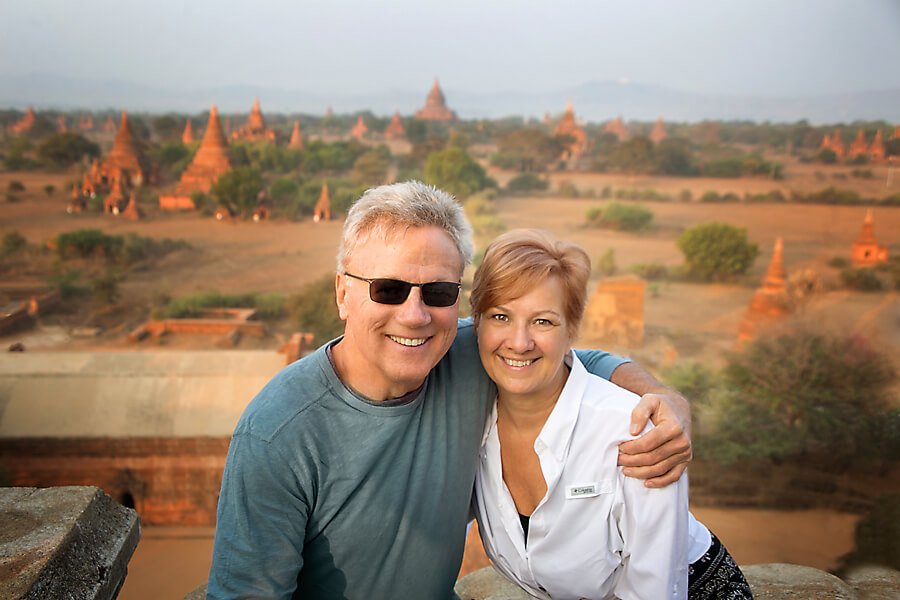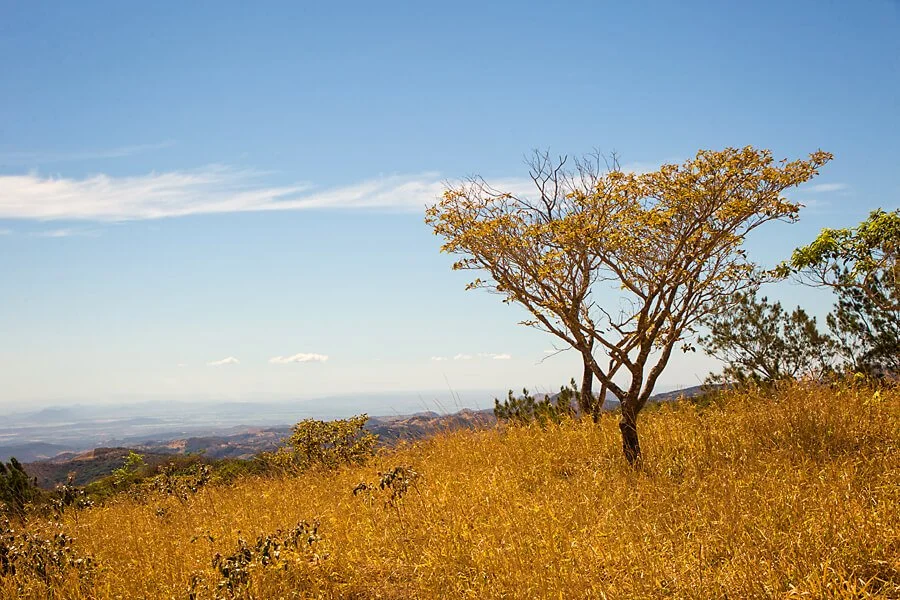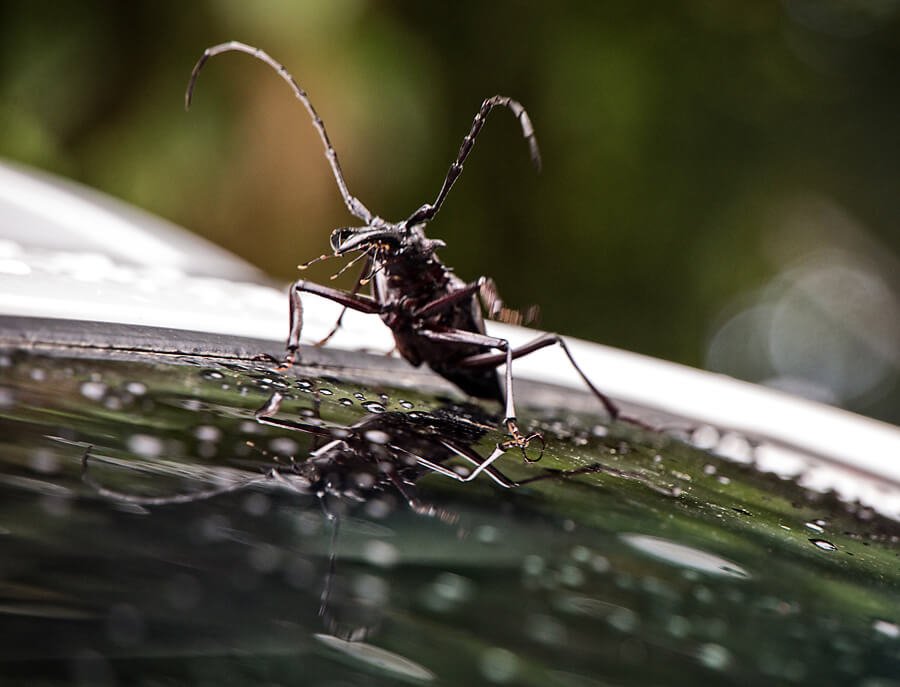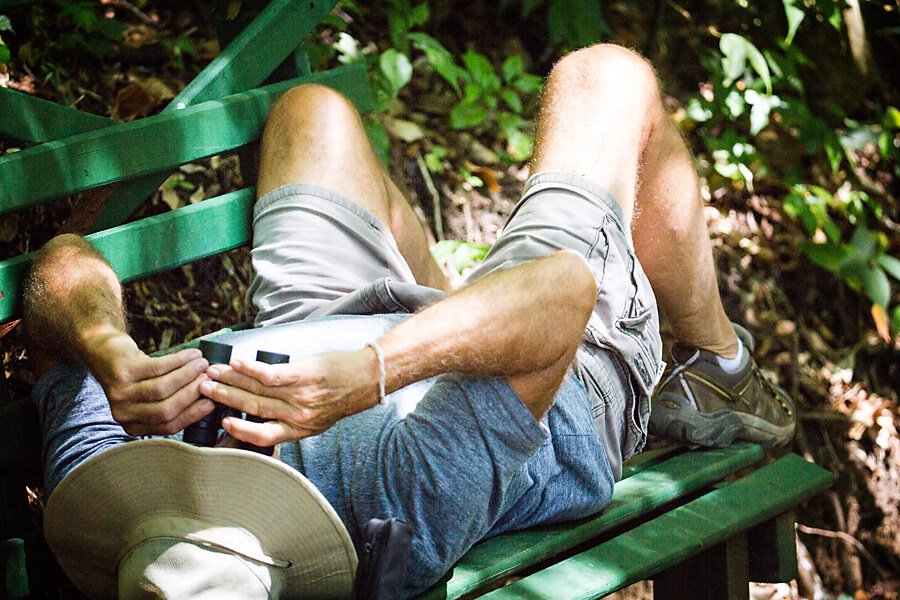Driving to Nosara (Nicoya Peninsula) and Monteverde | Costa Rica
When you travel, you have to go with the flow. Things don’t always go as expected. That being said, I have always been very fortunate as far as hotel reservations go. This changed in Nosara, Costa Rica. We made a 6 hour drive from Manuel Antonio to Nosara arriving on the Friday night before Easter. It was a fun, crazy, beautiful drive.
A typical way to mark a dangerous pot hole along the road in Costa Rica
We were so excited to make it through the last bumpy, narrow gravel road just before dark as my phone with the iGO gps was dying, only to learn the hotel only had us booked for 1 night, Monday, instead of 4 nights. After many phone calls and a long wait, she found us a place to sleep. Luckily we had the option to drive back to our friend’s place in San Jose for the next few days. A word of warning – DO NOT drive in Costa Rica on a holiday week – it is absolutely insane. I’ll be posting some videos of the drive later, but just take my word for it – don’t do it on a holiday!
We didn’t see much of Nosara, but got up early to catch the tale end of the Lunar eclipse and sunrise at the beach.
lunar eclipse
Misty Sunrise – Surf’s up!
On a side note, I had a similar event happen to me a little over a year ago in Ecuador. They messed up my reservation and moved me to a different hotel. The blessing was had I not been moved to Madre Tierra in Vilcabamba I never would have met Bill. Case in point – be open to change!
After a few days in San Jose, we set out to make the drive to Monteverde, one of the most beautiful drives we made in Costa Rica. The nicely paved roads twisted and turned through beautiful landscapes before changing to rough gravel for the last stretch. We passed through some nice little towns and villages in a mostly rural/agricultural area. Thankfully, it was not a holiday so the trip was much calmer than the roads had been a week before. To see video clips of the road trip, click here. If you’re thinking of driving in Costa Rica, it will give you an idea of what to expect.
One of the best choices for food in Costa Rica is called a Soda. These small, family-run restaurants are everywhere. We stopped at Soda Guayaquil along the road for “Tipical Food” .
The kind owner sat down and we managed to converse with our very limited Spanish as he explained the casado (lunch entree) for the day. It’s the only option on the menu, you just choose beef, chicken, or fish. It was delicious. One of the best, and cheapest, meals we had in Costa Rica.
The drive from San Jose to Monteverde took a little over 4 hours with the stop for lunch. We were pleasantly surprised as we drove up the steep, narrow drive to our cute, cozy cottage for the next week – Casita Tubu.
Our hosts lived next door and welcomed us with warm, freshly baked banana bread. I think this might have been my best Airbnb find yet at only $538 for the week. If you are thinking of renting through Airbnb you can click this link to get a $25 credit on your first stay.
Monteverde was my favorite place we visited in Costa Rica. Monteverde translates to “Green Mountain” and is one of the world’s first ecotourism destinations. Wish I could capture the magic of the mist-enshrouded cloud forest. Cloud forests are a mountaintop phenomenon. Moist, warm air swipes in off the ocean and is forced upward by mountain slopes forming clouds as it cools. The clouds form and disappear very quickly as they move across the sky. It’s not uncommon for the sun to be shining and you feel mist in the air. It’s truly a unique and beautiful place.
The Monteverde Cloud Forest Reserve was established in 1972. Due to the constant moisture there is an incredible diversity of plants growing everywhere. Huge trees can be draped in an amazing number of ephipytes – orchids, ferns, bromeliads. It just looks like a huge mass of green in every direction.
There are 878 species of ephiphytes found on the Monteverde reserve. I’m sure I learned about ephyipytes in school, but I never completely “got it” until I saw them for myself. Too bad every kid can’t go into the world to learn instead of through textbooks. I highly recommend getting a guide to help you really “see” what’s there and get the most of your visit.
Sergio at Monteverde Reserve was one of several knowledgeable guides we met.
The Monteverde Cloud Forest Biological Reserve is world renowned for protecting one of the most famous cloud forests in the world. According to their website there are more than 3,000 species of plants (including 500 types of orchids), over 500 species of birds, 120 species of amphibians and reptiles, and 130 species of mammals, thousands of species of insects, beautiful rivers & scenery ( I think I need more than a week!)
Green Palm Viper
Long Horned Beetle
Monteverde was settled in 1951 by Quakers from the US. They were drawn to the area because of their strong beliefs against the military system in the US. In 1948 Costa Rica had abolished it’s army, and they continue to have no army to this day. Although they began as farmers, the Quakers soon realized the special environment of the cloud forest. Because of this they dedicated a tract of land as the Monteverde Biological Nature Reserve. Only 3% of the reserve is open to visitation, the rest is under strict protection.
I wish every child could have this experience. I’m learning things about geography, nature, cultures, and the world that never quite soaked in during my classroom studies.
Changes in elevation or just a walk across the road in Monteverde can be a completely different climate and ecosystem. rainforests and cloud forests. We visited three different reserves in the area and each was quite different. One day we did a self guided hike at the Bajo del Tigre entrance to the Children’s Eternal Rainforest. This is the largest private reserve in Costa Rica, about 54,000 acres, and is one of the most biologically diverse on the planet. What’s really cool is that it was protected thanks to the fundraising efforts of children from around the world. Since the effort began in the late 1980’s by a group of Swedish children, the support has spread to schools, individuals and organizations from 44 different countries. Your kids might have learned about it in school.
Before we set out with map in hand, one of the guides in the office told us to listen for the Three Wattled Bell Bird and gave us a demonstration of the mating call. It was so much fun to actually hear the sound in the forest and follow the call until we spotted this guy doing his three whistle sounds followed by a loud “bonk”.
We’ve become bird watchers – complete with binoculars and guide books – never thought that would happen!
We spotted the Keel-billed Toucan at the Curi-Cancha Reserve with the help of our guide, Juan Carlos. They make a loud squawking sound, not a very pretty noise for such a colorful bird. The rainbow-colored canoe-shape bill and bright colored feathers are the kind of toucan I always picture in my mind – the fruit loop bird. Don’t know how they fly with that beak!
The best bird sighting of all was the Resplendant Quetzal at the Reserva Curi-Cancha. Spending the afternoon sitting in a meadow observing three of these magnificent birds in an avocado tree was a memorable experience. They are breathtaking to see with iridescent colors and long, flowing tail feathers. Unfortunately, they are an endangered species because of the deforestation south of Costa Rica where they previously would migrate.
Resplendent Quetzal at Curi Cancha Reserve
Curi-Cancha is a privately owned reserve, and was probably my favorite. It is less crowded than Reserva Monteverde with 240 acres, primarily cloud forest. Our tour guide Juan Carlos was full of knowledge and a lot of fun. We were especially intrigued by the Strangler Fig. It begins as an epiphyte when it’s seeds are deposited high in a tree’s canopy by bats, birds or monkeys. As it starts to grow the strangler fig sends long roots down to earth, eventually killing the host tree and leaving a hollow space inside.
We had such a great time with our guide Juan Carlos that we returned for a night tour. Being in the forest at night is a unique experience. The sounds, smells, and activity are all so different as the nocturnal dwellers come to life.We turned off our flashlights for a while to just listen and see the darkness. You really cannot even see the hand in front of your face.
Besides the great hiking and nature, the food in Monteverde was delicious. Some of our favorite restaurants – Johnny’s (great pizza); Tramonti’s, Orchid Coffee (amazing breakfast, herbal teas, and coffee); The Belmar (upscale dining);, El Jardin (beautiful view at the Monteverde Lodge). Glenda at Stellas had the best smoothies! It was quite common to see local farmers drive up and deliver fresh produce at any of these restaurants, no wonder the food was so fresh and tasty.
The area is nature in every direction, even if you don’t go into a reserve. One night an armadillo wandered slowly across the road in front of us. Another night we lured a moth as big as my hand back out of our cabin using our miner’s lights. Screams might have been involved in this process ;).
If you spend any time in Costa Rica, try to add a few days in Monteverde to your itinerary. There is so much to see and do in this area we could have easily spent more than a week there. A few things on our list for the next time:
Attend a Quaker meeting on Sunday. We heard it’s a great gathering to meet locals as well as visitors from all over the world
Coffee tour
bat tour
Cheese factory
Zipline
More hiking
horseback riding
Spanish lessons
Take binoculars, lemongrass oil or mosquito repellent, light weight long sleeves and pants, hiking shoes or good walking shoes, a refillable water bottle, snacks, a camera, and a rain jacket.
Not only was this trip enjoyable, but educational as well. The people of Monteverde are passionate about this area, and how important it is to protect it. I had never before experienced such a level of ecotourism, recycling, and care for the environment. The biodiversity and ecosystems in the Rainforest play a significant part in the health of our global environment – they truly are the “lungs of the world”.























